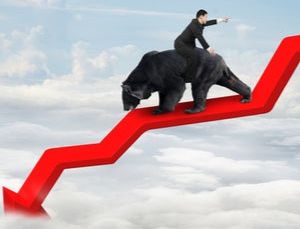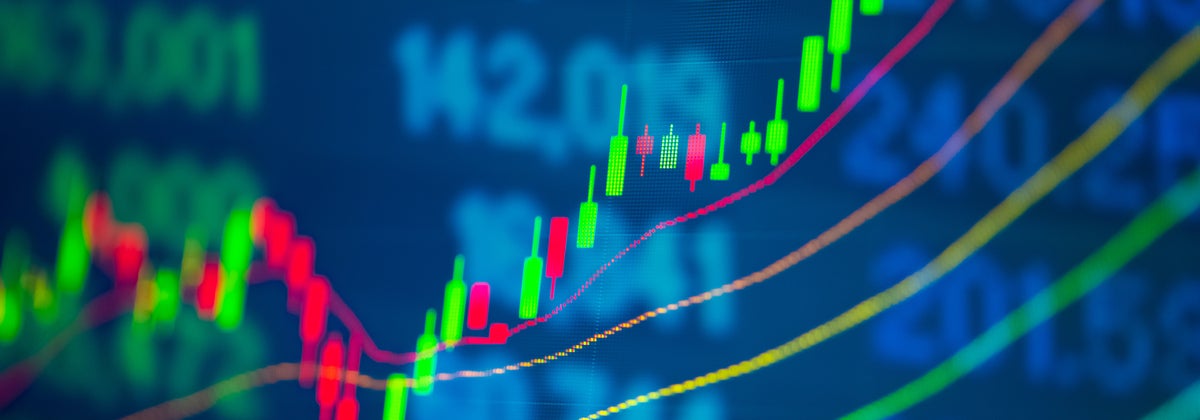Whether you play it safe or actively seek out high-risk investing, there is always a chance that you are going to lose some, or all, of your money. That’s because there are always factors that are out of our control.
When you own a house, for example, there’s always a risk that the property market will fall and reduce the value of your home. Or, in the case of an investment property, there’s a risk that your tenant could move out and leave you with no rental income to cover your mortgage and other costs.
As we saw at the start of the pandemic last year, unforeseen events can also lead to very sudden and sharp falls on share markets. Investors who panicked and sold out when markets fell in early 2020 not only suffered heavy losses, but they probably missed out on the strong rebound of financial markets over the remainder of the year.
And now there’s the current risk of leaving lots of your money in a savings account. Record low-interest rates mean cash is currently earning little or no returns at all. After account fees and the eroding effects of inflation on the purchasing power of money, cash held in savings accounts is effectively going backwards.
Risk-taking is on the rise
It’s likely that the impact of record low-interest rates is currently behind a noticeable trend. In short, there seems to be a big increase in risky investment behaviour right around the world. Perhaps, more accurately, some of the activity going on sits somewhere between high-risk speculation and outright gambling.
On the United States share market, for example, there’s been a wave of speculative buying into certain companies largely based on conversations published on online investment chat forums and social media channels. Groups of speculators, eager to make quick profits, have been behind heavy buying into these targeted companies, such as GameStop.
As a consequence, some share prices skyrocketed, only to be followed by very heavy selling. While some speculators made big gains, others that rushed in blindly made big losses, after being caught out when a share price dropped back suddenly.
There has also been a renewed rush into cryptocurrencies in recent weeks. Once again, this may be largely driven by speculators wanting to make quick gains.
A rush into bonds
Record-low interest rates seem to also be behind a flood of investing into what are known as high-yield corporate bonds. They pay higher income returns than other types of bond securities.
The reason for this is because some of the companies issuing high-yield bonds have weak credit ratings. Therefore they have a higher risk of defaulting on their repayments to lenders, including bond investors.
Borrowing money has never been cheaper, but companies under financial stress may have trouble getting finance through banks and other lenders. An alternative is for them to issue new bonds to investors. These bonds pay a higher interest rate return than bonds issued by governments and companies with higher credit ratings.
But the very strong demand for high-yield bonds recently has pushed up their market prices, and this has resulted in their investment yields falling to the lowest levels ever seen. That’s because bond yields typically fall when market prices rise, and vice versa.
Prices and yields generally move in opposite directions to each other. So, for taking a higher risk by buying into bonds with low credit ratings, some investors are now getting lower yield returns than they’d bargained for.

What can you do to manage the risk versus reward conundrum?
In basic terms, the higher the potential reward, the higher the risk of losing money. The lower the risk, the lower the potential reward. Things you can do to mitigate your risk, include:
Diversification within your investment portfolio
Diversification within asset classes, and across different asset classes, is often considered to be a useful strategy for managing traditional risks.
Long-term approach to investing
It’s also important to have a long-term approach to investing, because most risks are shorter-term in nature. Investment risks come in many forms. As well as general market risks, there are:
Security specific risks: a hazard or problem that applies to only one particular company, industry, or sector
Economic risk: risk to an investment made in a foreign country due to changes in that country’s economy, government or exchange rate
Geopolitical risks: associated with countries and regions affected by war, conflict or climate change
Liquidity risk: when you’re not able to convert your investment back into cash at short notice
Operational risk: due to inadequate or failed internal processes, people and systems, or from external events
Technology failure: things such as hacking, outages and cyber-terrorism can affect firms, governments and stock exchanges
But by having a long-term approach to investing, often you can weather the storm and your investments will likely smooth over time.
Risk appetite and investment goals
If you ask a financial adviser where you should invest your money, one of the first things they should ask you is how much risk you are comfortable with. Assessing your risk appetite, your overall investment goals and your timeframe, will help to determine the types of assets you may want to invest in.
That’s why understanding different types of risks, and why some assets are lower or higher risk than others, is such an important part of your investment planning process.
Check your KiwiSaver
KiwiSaver, too, comes with inherent risks. The four main KiwiSaver fund types each come with different risk levels, and levels of return on your investment:
- Defensive
- Conservative
- Balanced
- Growth
Do you know which fund you’re in, and if it’s right for your time of life and investment goals? The responsibility of ensuring you’re getting the best returns is all yours. So take the time to review your KiwiSaver and to compare it with other providers. You’ll soon have a clear picture of whether you’re happy with your choice of KiwiSaver provider and your returns.
Want to know more? Read: KiwiSaver: Which Fund Type Is Right For Me?
Ultimately, the more informed you are as a KiwiSaver investor, the better the decisions you’ll be able to make, which should help you build more funds towards retirement or that all-important first-home deposit.
And this is where Canstar can help. Our KiwiSaver dynamic comparison tables put all the information you need at your fingertips, from average five-year returns to fees.
So if you want to discover if you’re getting true value from your KiwiSaver, start comparing providers today by hitting on the button below.
Compare KiwiSaver providers for free with Canstar!
Enjoy reading this article?
You can like us on Facebook and get social, or sign up to receive more news like this straight to your inbox.
By subscribing you agree to the Canstar Privacy Policy




Share this article